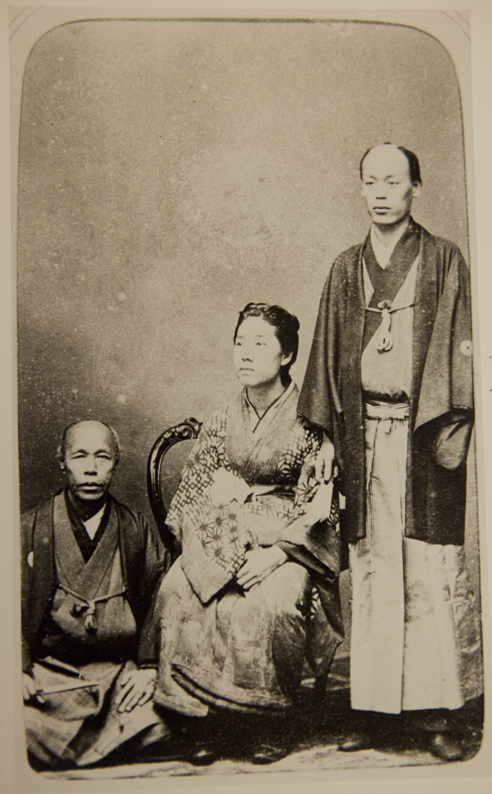A musician and two dancers were the first Japanese women to set foot on Australian shores, according to records immaculately researched by D.C.S. Sissons.[1] Shamisen player Mitsuko, and dancers Otake and Otome were part of the acrobatic team, Buhicrosan’s Troupe, who disembarked in Melbourne on the 14th of November in 1867 to perform at the Princess Theatre. The first recorded Japanese to ever been born in Australia was the daughter of members of another group of acrobats, the Great Dragon Troupe, aboard the S. S. Penola enroute from Melbourne to Adelaide. Billed as “Iranim Penola the South Australian Japanese,” she was displayed to audiences by her proud grandfather at the Theatre Royal, Adelaide and Port Adelaide Town Hall.[Sissons, 1999]

These are some of the lessor known historical facts about Japanese women in Australia I am discovering through the Papers of D.C.S. Sissons held at the National Library of Australia’s Special Collections.
The first Japanese women in Australia were artists and entertainers. I am a Japanese migrant in Australia and a performance maker. In the first two weeks of my research residency as part of NLA’s Japan Study Grant, I am beginning to find not only historical records, but threads and motifs that seems to be guiding my next performance work.

The butterfly motif, which reference my concerns with the popularity of Puccini’s opera Madama Butterfly (see blog entry You’ve Mistaken Me For A Butterfly) has appeared in history of the Japanese acrobats. The two earliest acrobatic groups to arrive and perform in Australia, the Great Dragon Troupe and the Buhicrosan’s Troupe both showcased as part of their repertoire: the Butterfly Trick (Ukare no Cho / devised by Osaka juggler Tanigawa Sadakichi [Sissons, 1999]in 1820’s[2])
The Bendigo Advertiser’s article about the Butterfly Trick performed by the Great Dragon Troupe, read that one of their jugglers, “… took his seat, tailor fashion, on a table in the centre and back of the stage. Tearing a strip of paper in pieces he took a small piece and twisted it into the shape of a butterfly… (He) took a fan, and waving it with a short and rapid motion, kept the butterfly fluttering in the air like a thing of life, sometimes alighting on his hand, at another time on his fan, and again on a flower. A second butterfly was formed, and two were kept flying about with as much ease as the one… The feat was greeted with great applause.”
Mt Alexander Mail wrote about Buhicrosan’s Troupe’s Butterfly Trick as “… The famous butterfly fanning was neatly done, but the amazement which this feat raises was soon brought to termination by an explanation being given of how the trick, for trick it is, was done…”[Sissons, 1999]
The Butterfly Trick seems to have been performed by men and not the women in the performances… and very curious to know more about how this trick was performed!

Japanese women in Australia- pioneers – artists – entertainers – butterfly – tricks which reveal and conceal in performance – are some of the concepts floating around in my mind as I continue the research phase of this undertaking.
[1] Historian and academic. David Carlisle Stanley Sissons was an historian in the Research School of Pacific Studies at the Australian National University where he was a research fellow from 1961-1965 and a fellow from 1965-1990. His principal fields of research were the history of Australia-Japan relations and the Second World War war crimes trials. In 1991, following his retirement from the ANU, Sissons took up a three-year post to establish an Australian Studies Centre at the Hiroshima Shudo University in Japan. Sissons died in Canberra in October 2006. (Mayumi Shinozaki, The National Library of Australia http://alra.org.au/newsletter1307/1307_shinozaki_1.html )
[2] Sissons, D.C.S. (1999) ‘Japanese Acrobatic Troupes Touring Australia 1867 – 1900’, Australasian Drama Studies, 35, pp. 73–107.

 Add to favorites
Add to favorites
0 thoughts on “Artists and the Butterfly Trick”